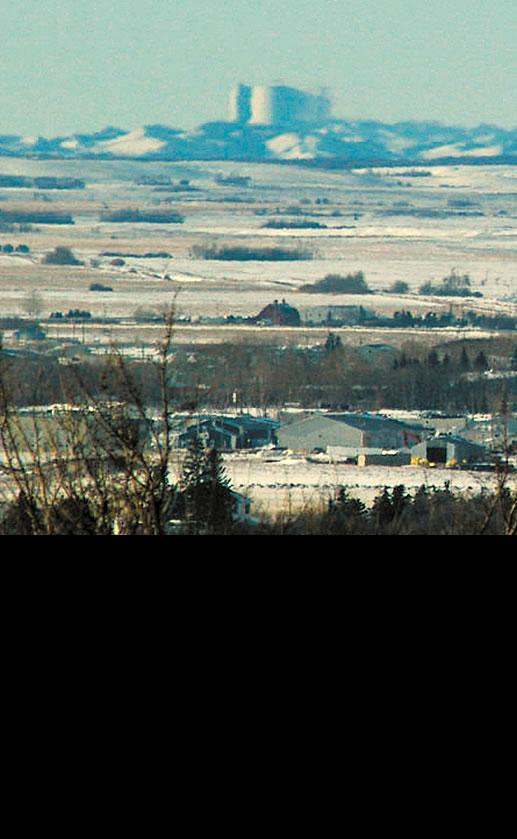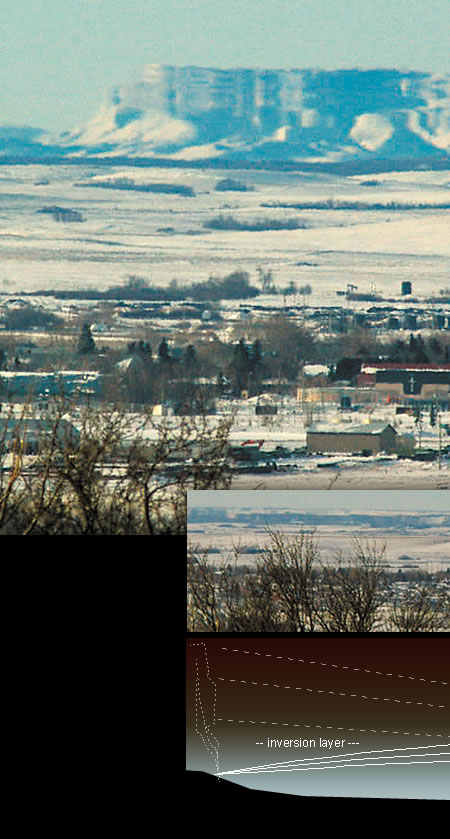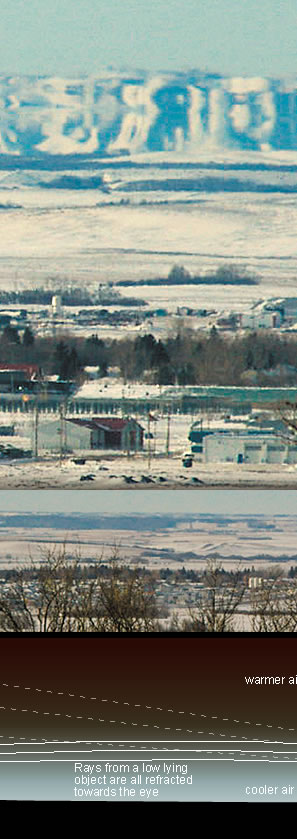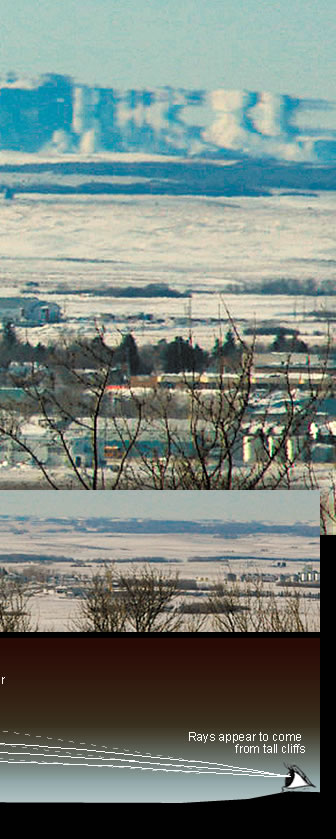Fata Morgana at Provost, Alberta imaged by Richard Holmes editor of Provost News .
Image ©Richard holmes, shown with permission.
Mirages result when light rays are refracted and curved by passage between air layers of different density and temperature. The archetype is the 'hot road' or inferior mirage where the miraged view is inverted and beneath the "real" one. Here the mirage of the shallow distant hills (normal view at right) is above the real object and takes the form of fantastical towering cliffs. It is an extreme and complicated variant of a superior mirage and called a "Fata Morgana" after the fabled Morgana, enchantress half-sister of King Arthur. The mirages are perhaps views of her island palace. The Morgana needs a temperature inversion, warmer air above cooler, with temperature gradients in parts increasing strongly with height. Then, several rays from a relatively low lying object or even the ground are all curved towards the eye giving the impression that the object is smeared upwards into a cliff. In reality the Morgana is more complicated with parts inverted and stepped. The temperature inversions making them are not simple and may also have waves that cause different mirage sections to vary in height. Although the Morgana might be seen anywhere it mostly occurs during very cold weather or in Arctic regions where heavy frigid air overlays the ground.
|




